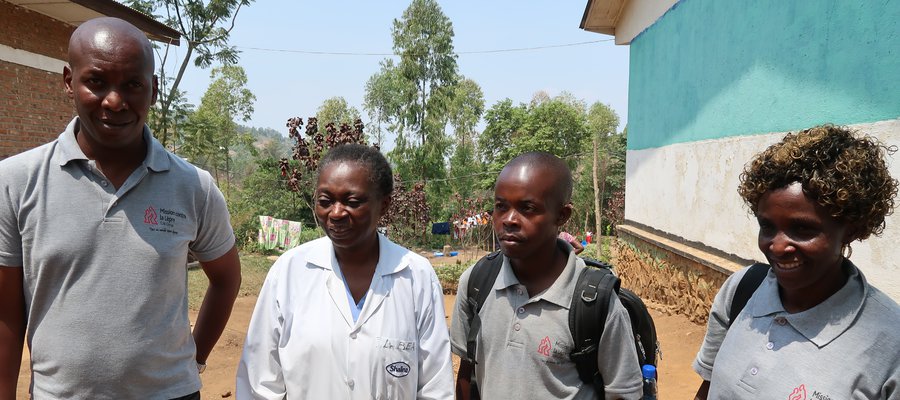An integrated approach to controlling NTDs in DRC

What?
This project is piloting an integrated approach to controlling leprosy and two other neglected tropical diseases -Buruli ulcer and yaws - in three provinces in the Democratic Republic of the Congo. The project explores innovative methods of detecting neglected tropical diseases at a lower cost, in the context of the DRC, to reduce the burden of death and disability.
Why?
The Leprosy Mission is committed to seeing zero transmission of leprosy, and is working under the UN’s Sustainable Development Goals (SDGs) to tackle it as one of the NTDs.
The Democratic Republic of the Congo’s extreme poverty (ranked 176th/189 countries in the world by the UN in 2018) makes focusing on NTDs essential. Although the DRC has reached the threshold of elimination of leprosy as a public health problem, it remains the most endemic country in Africa. Poor access to health services, and ignorance of the early signs of the illness lead to the late screening of patients.
Detecting NTDs early enables health care workers to provide suitable treatment and prevent avoidable disabilities; the WHO recommends an integrated approach to tackling them, which is not yet the norm in the DRC, and levels of detection are low. All three diseases are present in similar communities, so it makes sense to tackle them together.
How?
This project works with health workers at the community and district level - training them in how to raise awareness of the symptoms of leprosy, Buruli ulcer and yaws in local communities, and using local workshops as opportunities to detect the presence of these three neglected tropical diseases.
This will both raise awareness of how to spot early signs of the diseases and increase detection rates. To ensure that data is collected easily, the project uses a simple ‘app’, called KoBo Collect, which is free to use on smartphones and makes monitoring and evaluation simple across the districts.
The project is implemented by the National Leprosy Elimination Programme with the support of TLM and other ILEP members
Where?
Three provinces – Haut Uélé, Kongo and Mainema – in DRC
Partners
American Leprosy Mission, Damian Foundation, Sasakawa Health Foundation and the World Health Organization.
Challenges
Awareness about leprosy and NTDs is low in the general population, with information mainly shared on the World Leprosy Day. The project responds to this by running awareness workshops and using integrated tools – for both collection and awareness – in local health centers; and by ensuring health workers are trained in detection.
Successes
This project is still in its early stages, but we will update this page when we have more information available.